Scientific publications by Aneta Cedro
Banganarti Studies II, 2022
This paper presents the graffiti and dipinti from Banganarti
written on vessels intended for dome... more This paper presents the graffiti and dipinti from Banganarti
written on vessels intended for domestic use. Inscribed vessels
discovered at Banganarti are dated from the seventh until the
fourteenth century, covering nearly the entire settlement’s occupational
period. Altogether there were 102 finds. The texts can
be divided into two main categories based on their nature and
function: (1) owners’ inscriptions with 25 examples and (2) group
containing names of divine entities, constituting more than half
of all the discoveries.
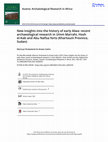
Azania: Archaeological Research in Africa, 2021
A group of nine fortified sites, similar to Roman fortlets, occur along approximately 550 km of t... more A group of nine fortified sites, similar to Roman fortlets, occur along approximately 550 km of the Middle Nile Valley of Sudan between the Fourth Cataract and the confluence of the White and Blue Niles. Previous research indicates that these forts were built in Late Antiquity, i.e. between the second and seventh centuries AD. This was a time of profound changes in the region that included the disintegration of the Meroitic kingdom and the development of several medieval Nubian realms. Drawing on previous research and the results of two seasons of fieldwork at three of the forts in 2018, this paper provides an answer to the questions of who and why these forts were built. Small finds and radiocarbon samples from various contexts provide insights into their history and indicate that all three of the forts investigated were erected in a short period during the second part of the sixth century, a time of conflict between the Nubian kingdoms that is described by the contemporary historian John of Ephesus. RÉSUMÉ Un groupe de neuf sites fortifiés, semblables à de petits forts romains, s'échelonne sur une distance d'environ 550 km le long de la vallée du Nil moyen au Soudan, entre la quatrième cataracte et le confluent du Nil Blanc et du Nil Bleu. Des recherches antérieures indiquent que ces forts furent construits dans l'Antiquité tardive, c'est-à-dire entre le deuxième et le septième siècle après J.-C. Ce fut une période de profonds changements dans la région, y compris la désintégration du royaume méroïtique et le développement de plusieurs royaumes nubiens médiévaux. S'appuyant sur des recherches antérieures et les résultats de deux missions de terrain sur trois de ces forts en 2018, cet article apporte une réponse aux questions de l'identité des bâtisseurs de ces forts et de la raison de leur existence. Les objets recueillis et les échantillons de radiocarbone provenant de divers contextes donnent un aperçu de l'histoire des trois forts étudiés. Ils indiquent qu'ils furent érigés au cours d'un bref intervalle dans la seconde partie du sixième siècle, une période de conflit entre les royaumes nubiens qui est décrite par l'historien contemporain Jean d'Éphèse.
Banganarti Studies I, 2021
This paper presents ceramics excavated from the medieval
dwellings of Banganarti, dating from the... more This paper presents ceramics excavated from the medieval
dwellings of Banganarti, dating from the sixth/seventh to the
fourteenth century. The analyses focused on the functional
aspects of the earthenware, with particular emphasis on the
technological variables of the pottery and their relationship to its
use. More than 100,000 fragments and complete vessels collected
during four years of excavations prove that ceramics was an
essential part of daily life in the settlement, necessary for almost
all food-related activities, such as storage, cooking, serving and
eating, but also for hygienic activities and agriculture.

Études et Travaux, 2019
The article presents the results of ethnographic research aimed at recording household economic b... more The article presents the results of ethnographic research aimed at recording household economic behaviours within rural communities in the Ad-Dabba Bend of the Nile. The fi eld research conducted in 2015-2019 provided fi rst-hand insight into patterns of the gendered village's ceramic production. The only currently operating household workshops in the area, located in Jabarūna and Rūmī Bakrī, are both run by women who produce mainly vessels for storing and cooling water and incense burners. Local residents remember many other similar workshops run by both women and men, which operated quite recently. The potteries in Ad-Dabba, representing a bigger and better organised workshop industry, are run by male descendants of immigrants from Nigeria, known in Sudan as Takarna. The pottery making is their only source of income and the range of forms they make is varied. This study is a result of fi eld research carried out in the Southern Dongola Reach as a part of the project which, in its most general terms, aims to determine the extent to which the social space in the medieval Nubian village was organised on similar principles as in modern times. There is plenty of evidence from the sphere of material and spiritual culture suggesting that medieval Christians and modern Muslims shared many principles of social organisation and daily life. Their popular religion, customs and beliefs, commemorative calendar and funerary practice were based on the same fundamental attitudes to the supernatural, although the direct sources of their piety might have been diff erent. The above lends credibility to the usage of ethnological analogy as a research method in reconstructing the daily life of medieval inhabitants of the Middle Nile area.

In November and December 2018 an archaeological fieldwork was organised at Jebel Umm Marrahi. The... more In November and December 2018 an archaeological fieldwork was organised at Jebel Umm Marrahi. The vast hilltop plateau was occupied already during the Mesolithic-Neolithic period. Extensive architectural remains, much younger than the prehistoric settlement, cover the entire surface of the flat top of the hill. The site was investigated by O.G.S. Crawford in the 1950s and archaeologists from the University of Khartoum in the 1970s and at the beginning of the 1980s.
The focus of our research was placed on the remains of the stone fort which was dated by Crawford to the Meroitic period and by El-Hassan to the late-Meroitic/early medieval times. Our aim was to obtain data that will allow establishing when the fort was built.
Detail surface survey, geophysical prospection and excavations were carried out. Pottery from the lowest occupation layers was dated to the post-Meroitic/Transitional Christian period. The upper layers contained Funj and modern finds mixed with the early medieval sherds with the addition of a few prehistoric sherds. Radiocarbon dates for eleven samples collected from various contexts within our trenches confirm the sequence and pointed to the second part of the 6th century AD as the most probable time of the fort construction.
The detail pottery survey extended beyond the fort’s curtains, covering the entire plateau. As a result, distribution maps of the pottery materials were created for the subsequent occupation phases (Mesolithic-Neolithic, post-Meroitic, early Christian and Funj period).
Handbook of Ancient Nubia (edited by Dietrich Raue), 2019
Contactos comerciales de la región de Murcia, 2019
Fuentes arqueológicas e históricas Projekt finansowany ze środków NCN "HARMONIA 7" [UMO 2015/18/M... more Fuentes arqueológicas e históricas Projekt finansowany ze środków NCN "HARMONIA 7" [UMO 2015/18/M/HS3/00248] kierowany przez Iwonę Modrzewską-Pianetti z Instytutu Archeologii Uniwersytetu Warszawskiego "Kontakty handlowe regionu Murcji (Hiszpania) ze światem śródziemnomorskim w starożytności na podstawie źródeł archeologicznych i historycznych" Proyecto financiado de los fondos de NCN (Centro Nacional de Ciencia, Polonia) "Harmonía 7" [UMO 2015/18/M/HS3/00248] dirigido por Iwona Modrzewska-Pianetti del Instituto de Arqueología de la Universidad de Varsovia "Contactos comerciales de la región de Murcia (España) con el mundo mediterráneo en la Antigüedad en base de las fuentes arqueológicas e históricas"
Nubian Archaeology in the XXIst Century. Proceedings of the Thirteenth International Conference for Nubian Studies, Neuchatel, 1st-6th September 2014, 2018

Polish Archaeology in the Mediterranean, 2017
The settlement remains surrounding the churches at the sites of Banganarti and Selib continued to... more The settlement remains surrounding the churches at the sites of Banganarti and Selib continued to be excavated in the 2015/2016 season by a team directed by Bogdan Żurawski. The research focused primarily on the living quarters around the churches and fortifications. An ethnographic survey carried out in Banganarti and Selib, and in the nearby villages documented traditional crafts, such as pottery making, basketry, baking and cooking using traditional techniques and recipes. Conservation and construction work were undertaken simultaneously with preparations for turning the Banganarti and Selib 1 sites into tourist attractions. Skeletal remains from earlier excavation were examined by a physical anthropologist. A survey combined with aerial documentation was carried out on selected archaeological sites in the Southern Dongola Reach (Soniyat, Diffar, Hettani, Bani Israil) and in the Third Cataract Region (Kissenfarki, Fagirinfenti). Short excavations were also conducted in the temple at Soniyat.
Polish Archaeology in the Mediterranean, 2017
The paper discusses some preliminary research on pottery from the refuse dump at Selib 3. The ass... more The paper discusses some preliminary research on pottery from the refuse dump at Selib 3. The assemblage comprised a rich repertoire of tableware, cooking and transport vessels. A striking feature of this collection is the abundance of imported products, some fine ware vessels (plates, small bottles etc.) but mostly amphorae, from Egypt and from the Eastern Mediterranean. The material from Selib 3 represents a homogenous chronological assemblage that can be placed in the 6th and early 7th century AD.
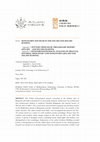
The Polish archaeological project excavating at the Nubian sites of Bangnarti and Selib concentra... more The Polish archaeological project excavating at the Nubian sites of Bangnarti and Selib concentrated on uncovering domestic architecture: the northeastern and southwestern districts at medieval Christian Banganarti and selected houses of Meroitic date at Selib 2. The conservation and restoration program put finishing touches on the Raphaelion church in Banganarti and did substantial work o the remains of the earlier churches. The oldest church from Selib 1 was investigated and dated to the 6th– 7th century based on a study of a well stratified ceramic assemblage. Pottery from the northern and southern refuse dumps ranged in date from the 9th to the 12th/13th century. A group of liturgical vessels, containing mostly small juglets and chalices, was distinguished in this assemblage. Exploration of the earlier Northern Building revealed pottery contemporaneous with the earliest phase of the church on site. Anthropological research was carried out on skeletal remains from the medieval cemeteries of Selib 1 and
Polish Archaeology in the Mediterranean, 2016
Archaeological works in Selib, during the seasons 2013/2014 and 2014/2015, were conducted in two ... more Archaeological works in Selib, during the seasons 2013/2014 and 2014/2015, were conducted in two “Christian” sites coded as Selib 1 and Selib 3. In Selib 1 excavation was carried on within the St. Menas church, where pottery attributed the 6th-7th century was collected and in the southern and northern parts of the main kom where layers of rubbish heap produced pottery ranging from the 9th to the 12/13th century. Among the assemblage a group of liturgical vessels was distinguished, it contains mostly small juglets and chalices. In the northern sector, under the rubbish layers, the exploration was continued within the so-called Northern Building. Pottery contemporaneous with the finds from the Old Church was collected there.
Part of a lower building was uncovered during the third and fourth seasons of excavation at the s... more Part of a lower building was uncovered during the third and fourth seasons of excavation at the site of a church in Selib 1. Finds from the fill between floors confirmed the early dating of the oldest church (6th/7th century). Two buildings were examined in the vicinity of the inner peribolos: BN.13, which proved to be a domestic dwelling from a later phase (11th–12th century), and BS.13, identified as a structure of religious function built before the 9th–10th century.

The report summarizes work carried out during the 2011 season by the archaeological and restorati... more The report summarizes work carried out during the 2011 season by the archaeological and restoration mission at Banganarti (Upper and Lower Churches, eastern tower of the fortifications, house SW1 in the southwestern part of the church enclosure) and at two sites in Selib: the church enclosure at Selib 1 and the Meroitic settlement at Selib 2. In the case of the earlier Selib church, inscriptions on the outer wall of the church have confirmed its dedication to St Menas. A baptistery tank associated with the oldest church on site and a lime-plastered rectangular tank approached by a flight of steps were also discovered. A large earthenware polylobed tray was recorded from the fill of the latest trench POLISH ARCHAEOLOGY IN THE MEDITERRANEAN (PAM) annual reports of the polish centre of mediterranean archaeology, University of Warsaw editor-in-chief: iwona Zych volume 23/1: Research 2011 all texts peer-reviewed. volume editors: iwona Zych, agnieszka szymczak editor for WUW: maria szewczyk Bibliographic editor: aleksandra Zych translation and language consultation: iwona Zych digital processing: ewa czyżewska image processing and copyediting assistance: ewa czyżewska, szymon maślak, marta momot, marek puszkarski, Łukasz rutkowski, agnieszka szymczak, Urszula Wicenciak original graphic design: Jerzy Kowalski, updated by ewa czyżewska for pcma dtp: ewa czyżewska, assistant Urszula Wicenciak cover: painted relief scene of a boat with oarsmen from the east Wall of the hypostyle hall, temple of tuthmosis iii in deir el-Bahari (photo Z. doliński) IssN 1234-5415 (Print), IssN 2083-537X (Online) © Polish centre of Mediterranean archaeology,
B. Żurawski, Kings and Pilgrims. St. Raphael Church II at Banganarti, mid-eleventh to mid-eighteenth Century [= Nubia V/Banganarti 2], 2014
The 2010 season saw excavations divided between two sites situated 9 km apart, Banganarti and Sel... more The 2010 season saw excavations divided between two sites situated 9 km apart, Banganarti and Selib. Continued exploration of the fortifications at Banganarti (discussed separately in this volume) and especially in the area between the enclosure wall and the east wall of the Raphaelion (Upper Church), was aimed at investigating the earliest phases of the complex. Extensive restoration and conservation were carried out inside the Upper Church. Fieldwork was carried out concurrently at three sites in the locality of Selib: a complex of superimposed churches and saqiya installations (1), a Meroitic settlement (2; finds from this location are discussed in the appendix) and an early Christian house (3). Work continued on the program of aerophotographical documentation of the sites and their immediate surroundings.
Books by Aneta Cedro

FULL-TEXT PDF IS AVAILABLE AT:
https://www.peeters-leuven.be/detail.php?search_key=9789042948006... more FULL-TEXT PDF IS AVAILABLE AT:
https://www.peeters-leuven.be/detail.php?search_key=9789042948006&series_number_str=14&lang=en
The Forts of North Omdurman volume presents research aimed at establishing when and why a group of nine forts were built in Upper Nubia (modern Sudan). These defences resemble late Roman fortlets commonly found in the Egyptian Eastern Desert and elsewhere in the Roman Empire. The nine forts were irregularly positioned within a 550km section of the Middle Nile Valley, a land which was never subject to Roman authority.
Excavations were conducted at the three southernmost forts situated on the outskirts of modern Omdurman. The methodology chosen was designed to define the possible chronological limits of the defences and to identify the remains left by the first settlers. The chapters include a detailed analysis of the forts' architecture, stratigraphy, pottery, beads, plaster, animal and plant remains supplemented by a series of radiocarbon dates. The result is a new insight into the dynamic beginnings of the forts and the challenges faced by the rulers of the medieval Kingdom of Alwa in the 6th and 7th centuries AD.
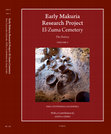
Early Makuria Research Project. El-Zuma cemetery Vol. 2. The Pottery , 2020
The three-volume publication of the results of archaeological excavations at the UNESCO heritage ... more The three-volume publication of the results of archaeological excavations at the UNESCO heritage site of El-Zuma in Sudan, investigated by PCMA University of Warsaw and the National Corporation for Antiquities and Museums in Khartoum, presents an Early Makurian elite tumuli cemetery from the 5th–6th centuries AD. This period in ancient Nubian history, preceding the rise of the Christian kingdoms, has long been understudied. Informed analyses by an array of specialists on the team cover the archaeological and bioarchaeological evidence from the tombs (Volume 1) as well as the abundant ceramics (Volume 2) and small finds, especially jewellery, weaponry and personal accessories (Volume 3). The outcome is a people-oriented view of an elite community in ancient Nubia at the dawn of a new age in its history. See Less
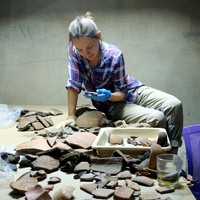
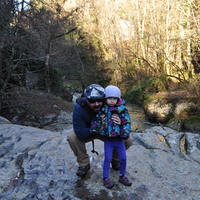


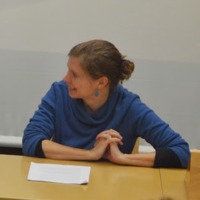
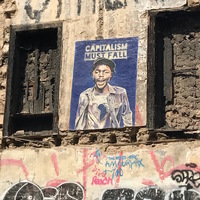


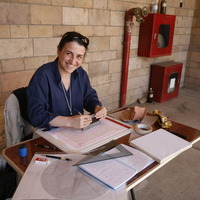
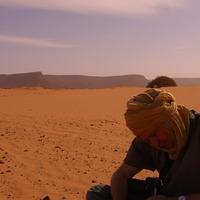

Uploads
Scientific publications by Aneta Cedro
written on vessels intended for domestic use. Inscribed vessels
discovered at Banganarti are dated from the seventh until the
fourteenth century, covering nearly the entire settlement’s occupational
period. Altogether there were 102 finds. The texts can
be divided into two main categories based on their nature and
function: (1) owners’ inscriptions with 25 examples and (2) group
containing names of divine entities, constituting more than half
of all the discoveries.
dwellings of Banganarti, dating from the sixth/seventh to the
fourteenth century. The analyses focused on the functional
aspects of the earthenware, with particular emphasis on the
technological variables of the pottery and their relationship to its
use. More than 100,000 fragments and complete vessels collected
during four years of excavations prove that ceramics was an
essential part of daily life in the settlement, necessary for almost
all food-related activities, such as storage, cooking, serving and
eating, but also for hygienic activities and agriculture.
The focus of our research was placed on the remains of the stone fort which was dated by Crawford to the Meroitic period and by El-Hassan to the late-Meroitic/early medieval times. Our aim was to obtain data that will allow establishing when the fort was built.
Detail surface survey, geophysical prospection and excavations were carried out. Pottery from the lowest occupation layers was dated to the post-Meroitic/Transitional Christian period. The upper layers contained Funj and modern finds mixed with the early medieval sherds with the addition of a few prehistoric sherds. Radiocarbon dates for eleven samples collected from various contexts within our trenches confirm the sequence and pointed to the second part of the 6th century AD as the most probable time of the fort construction.
The detail pottery survey extended beyond the fort’s curtains, covering the entire plateau. As a result, distribution maps of the pottery materials were created for the subsequent occupation phases (Mesolithic-Neolithic, post-Meroitic, early Christian and Funj period).
De Gruyter Online
https://www.degruyter.com/viewbooktoc/product/455071
Google Books
https://books.google.fr/books?id=mXWcDwAAQBAJ&pg=PA987&lpg=PA987&dq=Archaeological+Surveys
+at+the+Third,+Fourth+and+Fifth+Cataract+Regions&source=bl&ots=la2TG3N6zq&sig=ACfU3U0ZlLcwyEh
DDDOPfZCnqszeqALrHw&hl=pl&sa=X&ved=2ahUKEwjt1_HMjbrlAhVNxYUKHTr_C7EQ6AEwAXoECAkQBA#
v=onepage&q=Archaeological%
Books by Aneta Cedro
https://www.peeters-leuven.be/detail.php?search_key=9789042948006&series_number_str=14&lang=en
The Forts of North Omdurman volume presents research aimed at establishing when and why a group of nine forts were built in Upper Nubia (modern Sudan). These defences resemble late Roman fortlets commonly found in the Egyptian Eastern Desert and elsewhere in the Roman Empire. The nine forts were irregularly positioned within a 550km section of the Middle Nile Valley, a land which was never subject to Roman authority.
Excavations were conducted at the three southernmost forts situated on the outskirts of modern Omdurman. The methodology chosen was designed to define the possible chronological limits of the defences and to identify the remains left by the first settlers. The chapters include a detailed analysis of the forts' architecture, stratigraphy, pottery, beads, plaster, animal and plant remains supplemented by a series of radiocarbon dates. The result is a new insight into the dynamic beginnings of the forts and the challenges faced by the rulers of the medieval Kingdom of Alwa in the 6th and 7th centuries AD.
written on vessels intended for domestic use. Inscribed vessels
discovered at Banganarti are dated from the seventh until the
fourteenth century, covering nearly the entire settlement’s occupational
period. Altogether there were 102 finds. The texts can
be divided into two main categories based on their nature and
function: (1) owners’ inscriptions with 25 examples and (2) group
containing names of divine entities, constituting more than half
of all the discoveries.
dwellings of Banganarti, dating from the sixth/seventh to the
fourteenth century. The analyses focused on the functional
aspects of the earthenware, with particular emphasis on the
technological variables of the pottery and their relationship to its
use. More than 100,000 fragments and complete vessels collected
during four years of excavations prove that ceramics was an
essential part of daily life in the settlement, necessary for almost
all food-related activities, such as storage, cooking, serving and
eating, but also for hygienic activities and agriculture.
The focus of our research was placed on the remains of the stone fort which was dated by Crawford to the Meroitic period and by El-Hassan to the late-Meroitic/early medieval times. Our aim was to obtain data that will allow establishing when the fort was built.
Detail surface survey, geophysical prospection and excavations were carried out. Pottery from the lowest occupation layers was dated to the post-Meroitic/Transitional Christian period. The upper layers contained Funj and modern finds mixed with the early medieval sherds with the addition of a few prehistoric sherds. Radiocarbon dates for eleven samples collected from various contexts within our trenches confirm the sequence and pointed to the second part of the 6th century AD as the most probable time of the fort construction.
The detail pottery survey extended beyond the fort’s curtains, covering the entire plateau. As a result, distribution maps of the pottery materials were created for the subsequent occupation phases (Mesolithic-Neolithic, post-Meroitic, early Christian and Funj period).
De Gruyter Online
https://www.degruyter.com/viewbooktoc/product/455071
Google Books
https://books.google.fr/books?id=mXWcDwAAQBAJ&pg=PA987&lpg=PA987&dq=Archaeological+Surveys
+at+the+Third,+Fourth+and+Fifth+Cataract+Regions&source=bl&ots=la2TG3N6zq&sig=ACfU3U0ZlLcwyEh
DDDOPfZCnqszeqALrHw&hl=pl&sa=X&ved=2ahUKEwjt1_HMjbrlAhVNxYUKHTr_C7EQ6AEwAXoECAkQBA#
v=onepage&q=Archaeological%
https://www.peeters-leuven.be/detail.php?search_key=9789042948006&series_number_str=14&lang=en
The Forts of North Omdurman volume presents research aimed at establishing when and why a group of nine forts were built in Upper Nubia (modern Sudan). These defences resemble late Roman fortlets commonly found in the Egyptian Eastern Desert and elsewhere in the Roman Empire. The nine forts were irregularly positioned within a 550km section of the Middle Nile Valley, a land which was never subject to Roman authority.
Excavations were conducted at the three southernmost forts situated on the outskirts of modern Omdurman. The methodology chosen was designed to define the possible chronological limits of the defences and to identify the remains left by the first settlers. The chapters include a detailed analysis of the forts' architecture, stratigraphy, pottery, beads, plaster, animal and plant remains supplemented by a series of radiocarbon dates. The result is a new insight into the dynamic beginnings of the forts and the challenges faced by the rulers of the medieval Kingdom of Alwa in the 6th and 7th centuries AD.
dirigido por Iwona Modrzewska-Pianetti del Instituto de Arqueología de la Universidad de Varsovia
“Contactos comerciales de la región de Murcia (España) con el mundo mediterráneo en la Antigüedad en base de las fuentes arqueológicas e históricas”
Full text is available at:
http://www.polacynadnilem.uw.edu.pl/sezony/2016-2017/misje-polskie-sudan/280-banganarti-i-selib-banganarti-i-selib/